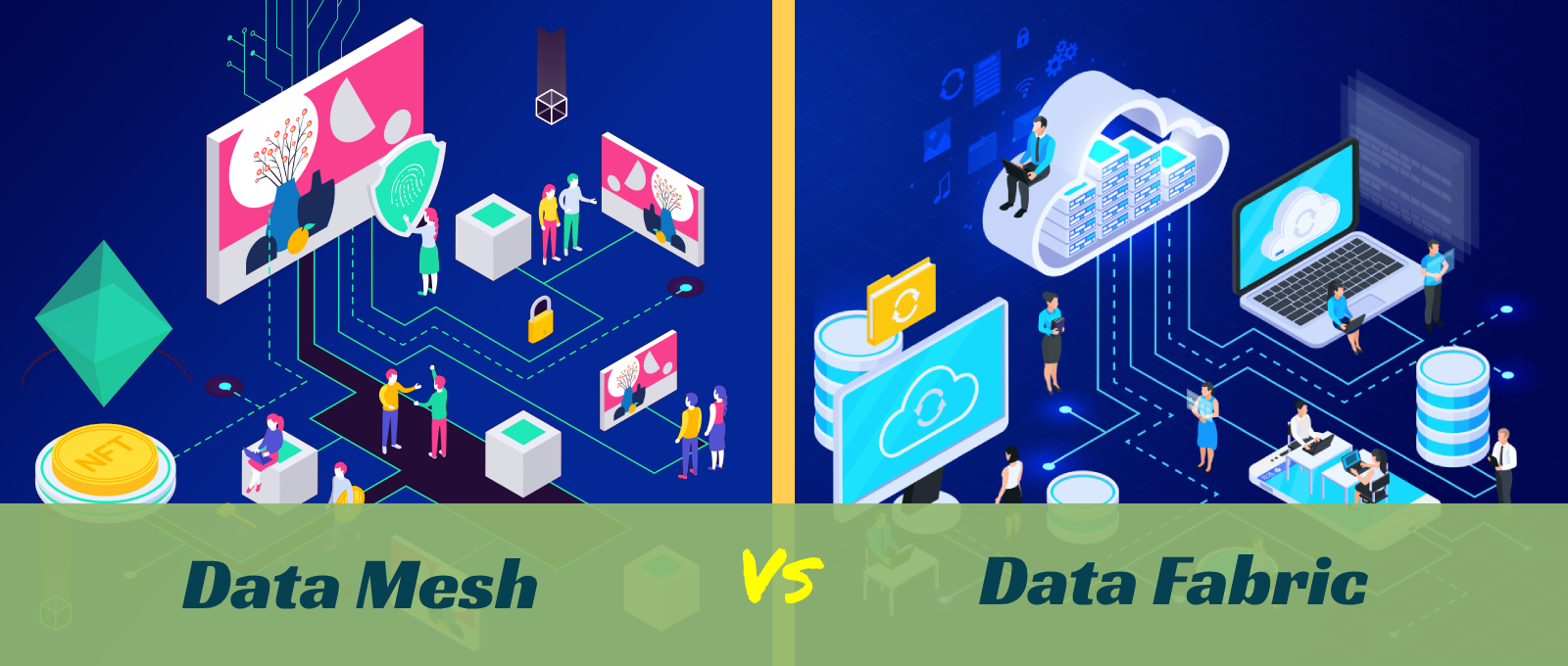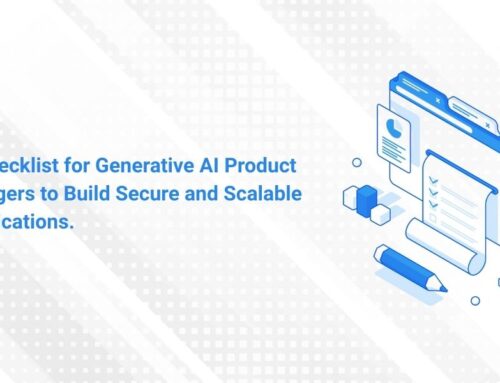Data Mesh VS Data Fabric: A Comparative Analysis of Modern Data Management Approaches
Data Mesh and Data Fabric are two approaches used in managing and organizing data within an organization. While they share some similarities, they also have distinct characteristics that suit different contexts. Here’s a realistic comparison to help you understand which approach may be more suitable for your needs:
Data Mesh:
Data Mesh is an organizational paradigm that promotes decentralized ownership and management of data. It advocates for breaking down data silos and distributing data responsibilities to cross-functional teams. Each team becomes responsible for the data products they create, including data quality, governance, and lifecycle management.
Data Mesh is a decentralized and domain-oriented approach to data architecture. It revolves around treating data as a product and assigns ownership and governance responsibility to individual domain teams within an organization. Key principles of Data Mesh include decentralized ownership, self-serve data infrastructure, and federated computational governance. Data Mesh encourages the creation of copies of data within each domain team to facilitate independent decision-making and analysis.
Suitability:
Data Mesh is best suited for organizations with a diverse range of data use cases and a high degree of domain expertise spread across different teams. It thrives in complex and dynamic environments where data needs are constantly evolving and require agility and flexibility. Data Mesh empowers teams to take ownership of their data and promotes collaboration across the organization.
Choosing Data Mesh:
Consider implementing Data Mesh if your organization:
- Has multiple independent teams with specialized domain knowledge.
- Encounters challenge centralized data management and struggle with data silos.
- Values autonomy and accountability at the team level.
- Requires faster delivery of data products and insights to stakeholders.
- Prefers a flexible and scalable approach to adapt to evolving data requirements.
Data Fabric:
Data Fabric is a centralized and unified data architecture that aims to provide a consistent and integrated view of data across the organization. It encompasses various technologies, such as data integration, data virtualization, and metadata management, to create a cohesive data layer. Data Fabric enables data discovery, access, and governance through a centralized control plane.
The central concept behind Data Fabric is the seamless integration of various data products without the need for creating multiple copies of data. The term “Fabric” signifies the interconnectedness and cohesiveness of data within the system. While Data Mesh encourages the creation of copies, Data Fabric discourages it, promoting a more consolidated and unified data approach. The semantic layer may vary at the consumption layer, allowing for flexibility and customization.
Suitability:
Data Fabric is well-suited for organizations that require a unified and consistent view of data across departments and applications. It is effective in situations where data needs to be integrated, harmonized, and made available for consumption through standardized interfaces. Data Fabric offers centralized control and governance, ensuring data quality, security, and compliance.
Choosing Data Fabric:
Consider implementing Data Fabric if your organization:
- Struggles with data fragmentation and inconsistency across various systems.
- Requires a single source of truth and a unified view of data for reporting and analysis.
- Values centralized governance and control over data access and security.
- Needs to integrate data from disparate sources and applications.
- Emphasizes data quality, compliance, and regulatory requirements.
Key Differences:
- Ownership: Data Mesh promotes decentralized ownership, while Data Fabric emphasizes centralized control over data.
- Collaboration: Data Mesh fosters collaboration and breaks down data silos, whereas Data Fabric focuses on creating a unified view of data.
- Agility: Data Mesh enables teams to adapt quickly to changing needs, while Data Fabric provides stability and control.
- Data Integration: Data Mesh decentralizes data integration, while Data Fabric emphasizes centralized integration.
- Governance: Data Mesh distributes data governance responsibilities, while Data Fabric centralizes governance for consistent standards.
Considerations Regarding Cost and Effectiveness
Cost considerations:
Data Mesh: Implementing Data Mesh may involve initial costs associated with setting up decentralized data teams, providing training and support, and adopting new tools and technologies. It may also require investments in cultural and organizational change management. However, in the long run, the decentralized nature of Data Mesh can lead to increased efficiency, agility, and faster time-to-market for data products, potentially resulting in cost savings.
Data Fabric: Implementing a Data Fabric typically involves investment in centralizing data infrastructure, integrating disparate systems, and establishing a unified data layer. Depending on the scale and complexity of the organization’s data ecosystem, the initial costs for implementing a Data Fabric can be higher. However, the centralized control and governance provided by a Data Fabric can help streamline data management processes, enhance data quality, and improve overall operational efficiency.
Effectiveness considerations:
Data Mesh: Data Mesh is particularly effective in organizations with diverse data use cases and a high degree of domain expertise. It empowers teams to take ownership of their data, which can lead to faster innovation and more effective decision-making. Data Mesh promotes collaboration and knowledge sharing, enabling teams to better leverage their expertise. However, it requires a cultural shift and may face challenges in maintaining consistency and coordination across decentralized teams.
Data Fabric: Data Fabric is effective in organizations that require a unified and consistent view of data across departments and applications. It provides centralized control and governance, ensuring data quality, security, and compliance. A Data Fabric can simplify data integration, harmonization, and access, making it easier for users to discover and utilize data assets. However, implementing a Data Fabric may require significant effort in integrating various data sources and aligning existing systems with the centralized architecture.
Conclusion
In conclusion, choosing the right data management approach, whether it’s Data Mesh or Data Fabric, requires careful consideration of your organization’s specific needs and goals. Data Mesh promotes decentralization, empowering teams to take ownership of their data and fostering collaboration, while Data Fabric offers centralized control and governance for a unified view of data. To implement your chosen approach successfully, partnering with experienced data science and analytics, ThirdEye Data can provide the expertise and support needed to unlock the full potential of your data assets and drive meaningful business outcomes.









